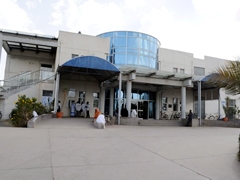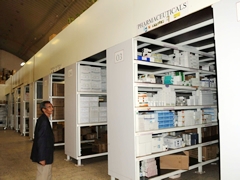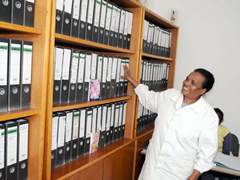There is something unique about Eritrea's Orotta hospital when one visits there for the first time. It's clean, organized and the handling of patients runs smoothly. But this was not so until a few years ago when the 5S–Kaizen–TQM system was introduced to the hospital and completely changed the way things were done.
The system is based on the fact that when any task is done in an organized system, then it shall efficiently and effectively achieve its intended results. The 5S are initials for Sort (remove unnecessary items at work station), Set (organize in proper order), Shine (maintain cleanliness), Standardize (set up the 3S mentioned as the norm), and Sustain (maintain the discipline). Kaizen is a process of continuous quality improvement and TQM is Total Quality Management.

Eritrea's Ministry of Health selected Orotta and Halibet hospitals to pilot the project and later introduced it to 17 referral and community hospitals countrywide. All have embraced the system and have recorded notable improvement in quality delivery. It was introduced by JICA as part of health improvement assistance to Eritrea and is a Japanese style quality management method.

Sereke Tesfatsion, who is the head of laboratory services at Orotta hospital, says two people were trained in Japan in the 5S system and later additional three people visited Sri Lanka where the system has been a success. "When they returned, they conducted a workshop for the rest of the staff and it was very effective," he said. "We prepared an action plan and identified people to carry it forward. We also held sensitization workshops and expounded on the philosophy of the 5S system. Then we started to identify entry points into the hospitals."
Sereke says they first introduced the system at the emergency section of the hospital, then to the card room, pharmacy and x-ray sections. In the card room section where patients records are kept, everything is in order and anytime the doctor wants the records of a patient, they are easily retrieved. Before the system was introduced, the section was disorderly and old patients could not get their records easily.
Before implementation, we wanted everybody involved to know the basic philosophy of the 5S, says Sereke. The implementation had to be gradual and different sections of the hospital competed. JICA office in Eritrea always came in to help whenever such assistance was needed.
Today the hospitals where the system was introduced are very different, especially the patient's reception areas and the drugs stores. Before, expired and new drugs were stored together. But today, the culture of orderliness has been adopted. Expired drugs are removed and kept separately from active ones. Every drug is well labeled and it is easy for the store keeper to identify drugs that are about to expire or getting finished in order to make new orders.

A clean, orderly Orotta hospital in Asmara shows the success of 5S-Kaizen-TQM system which was introduced with assistance from JICA.
"Imagine a situation where drugs could be out of stock and we would not even know until they were prescribed by the doctor," said Mehar Abraham, head of statistics at the hospital. "All the staff are now used to orderliness and the different sections run smoothly. All of us have come to accept that if you organize your office, you can plan ahead and achieve best results".
img




scroll